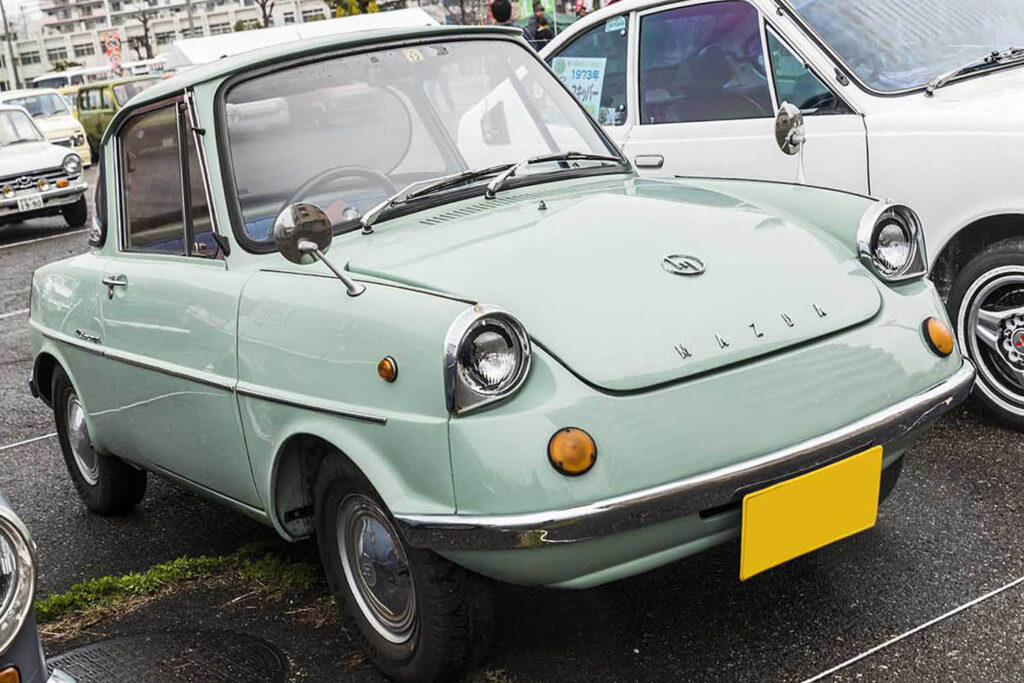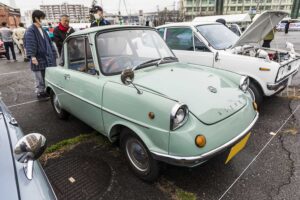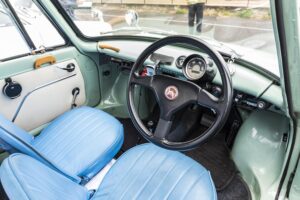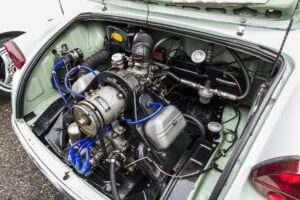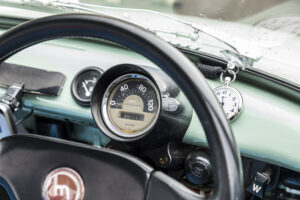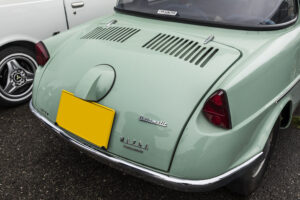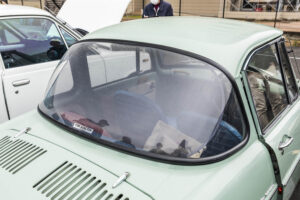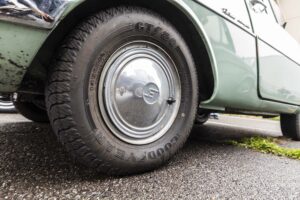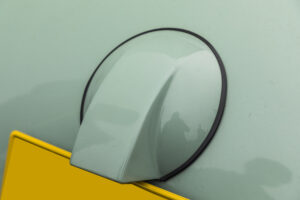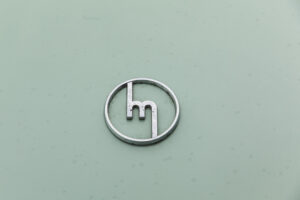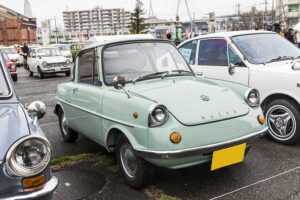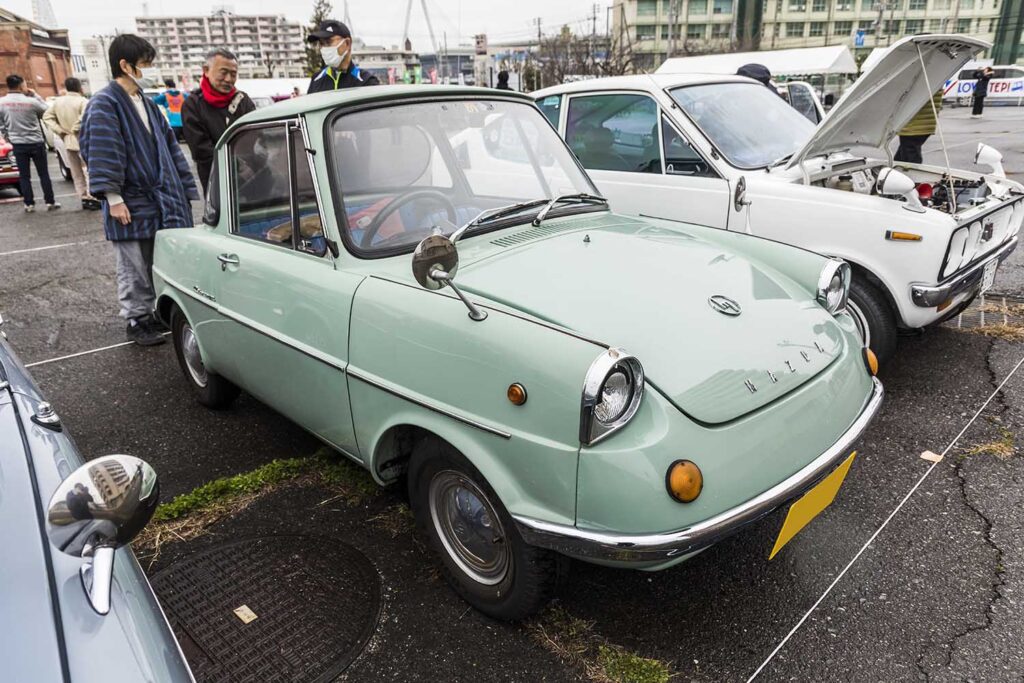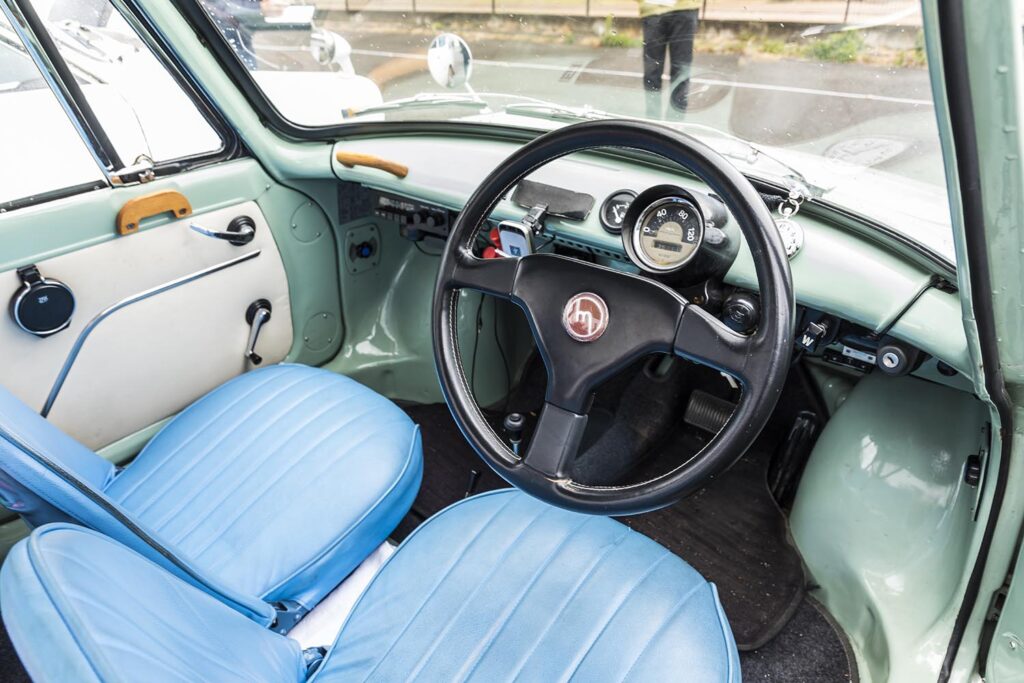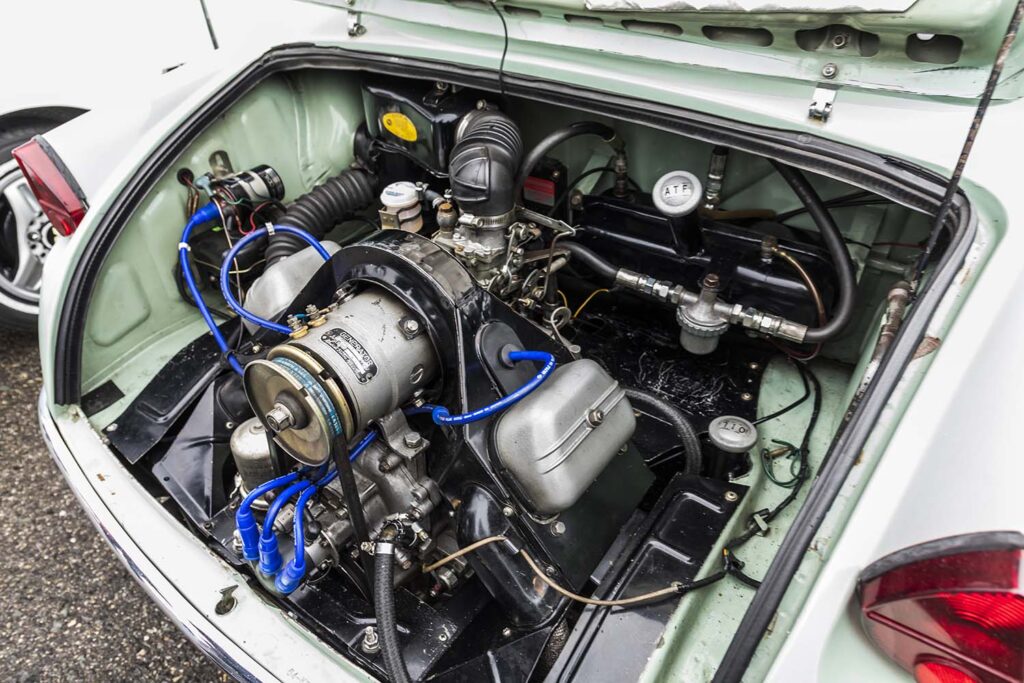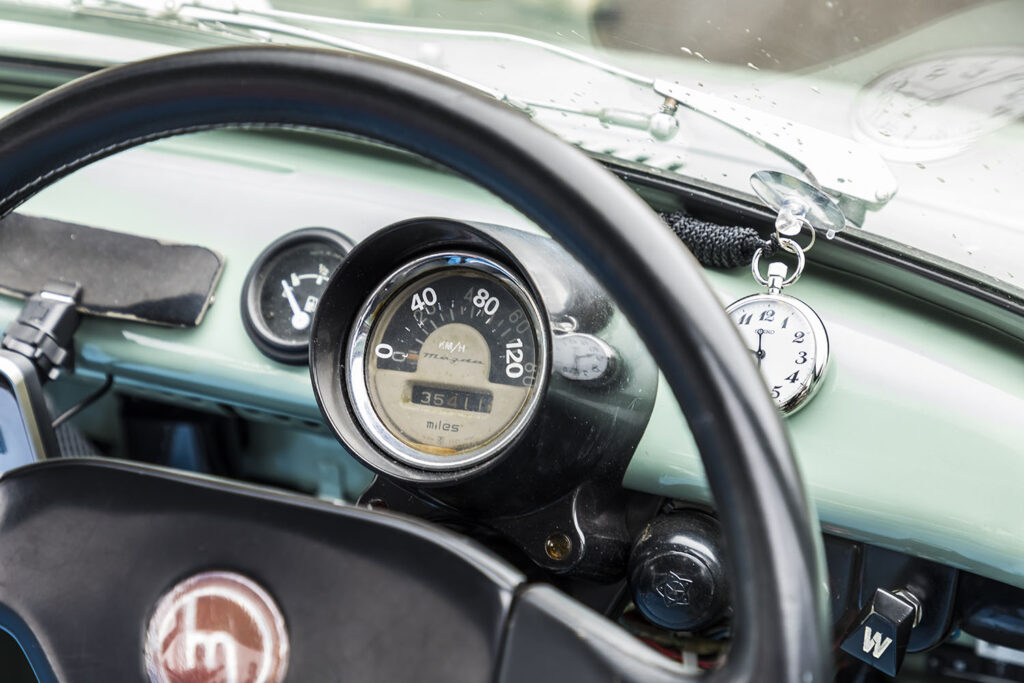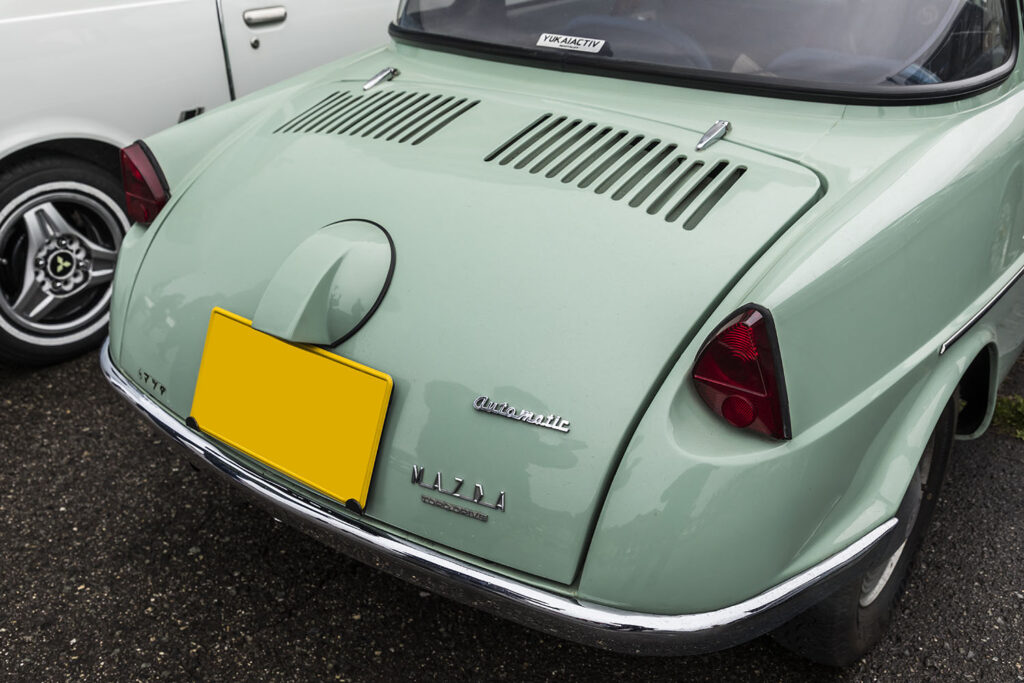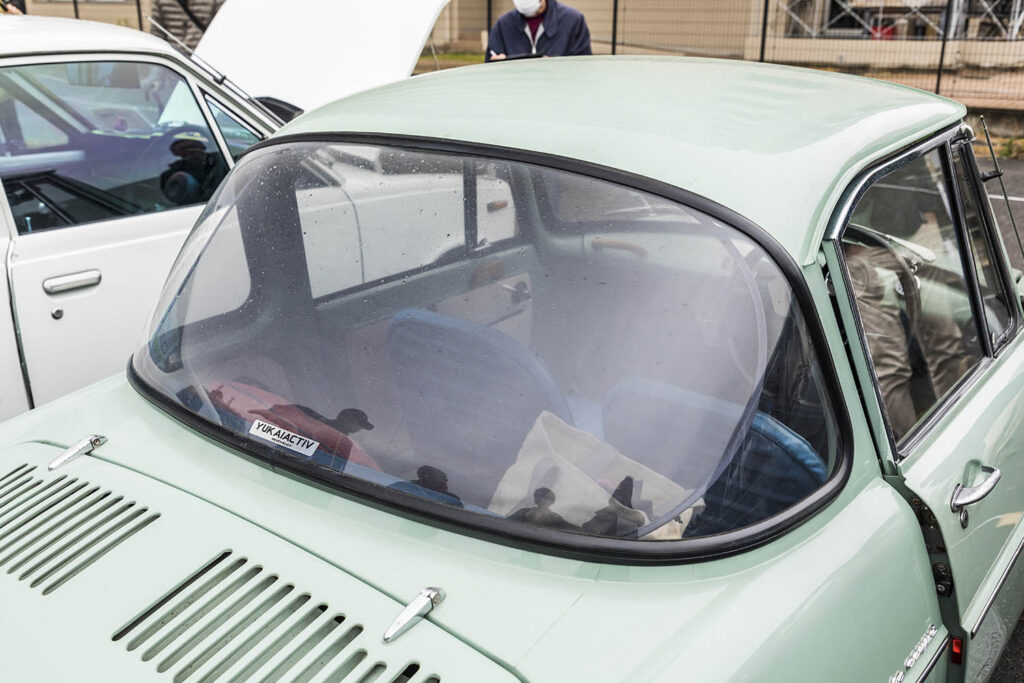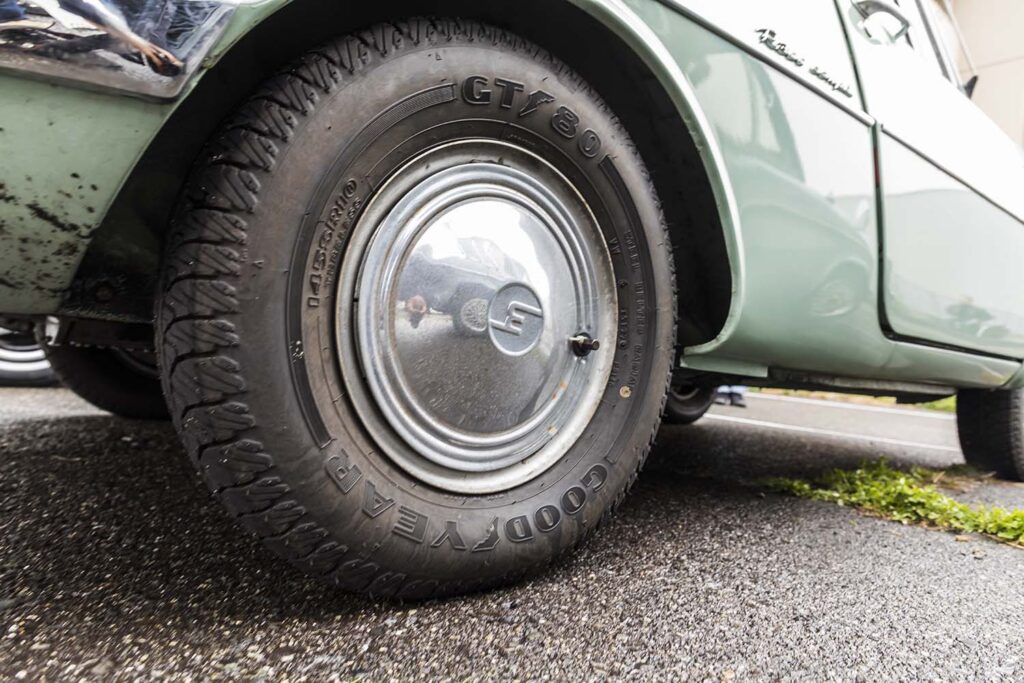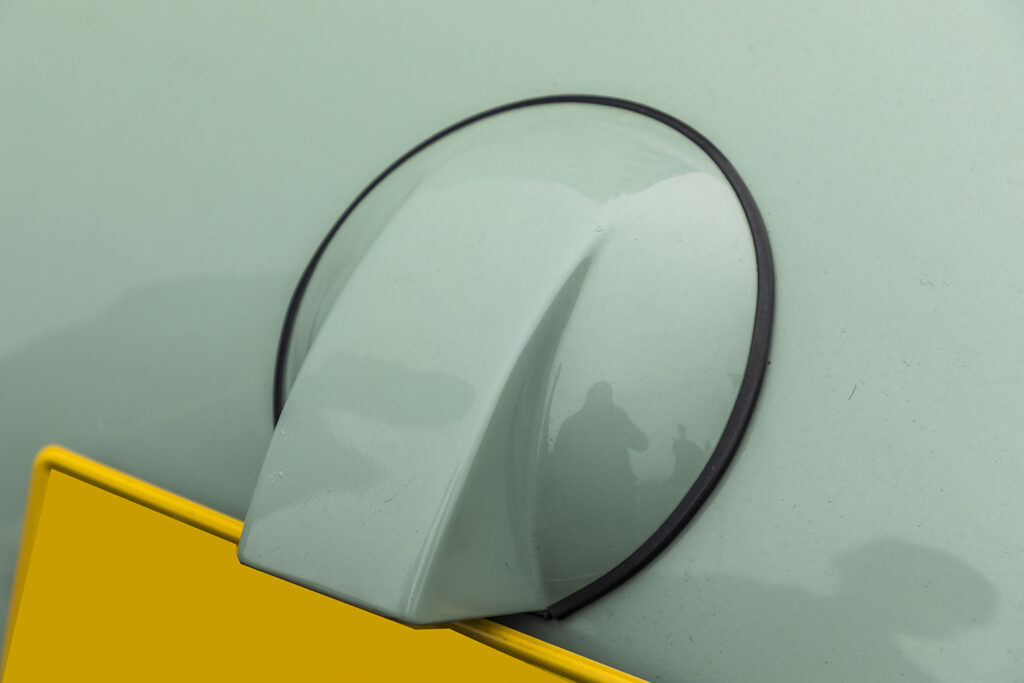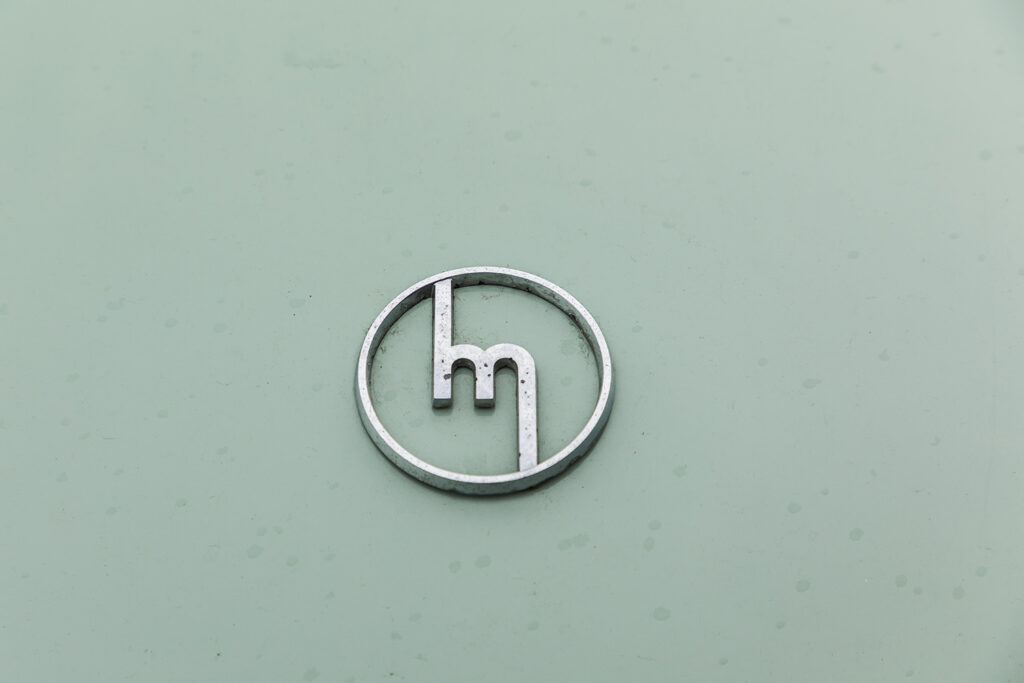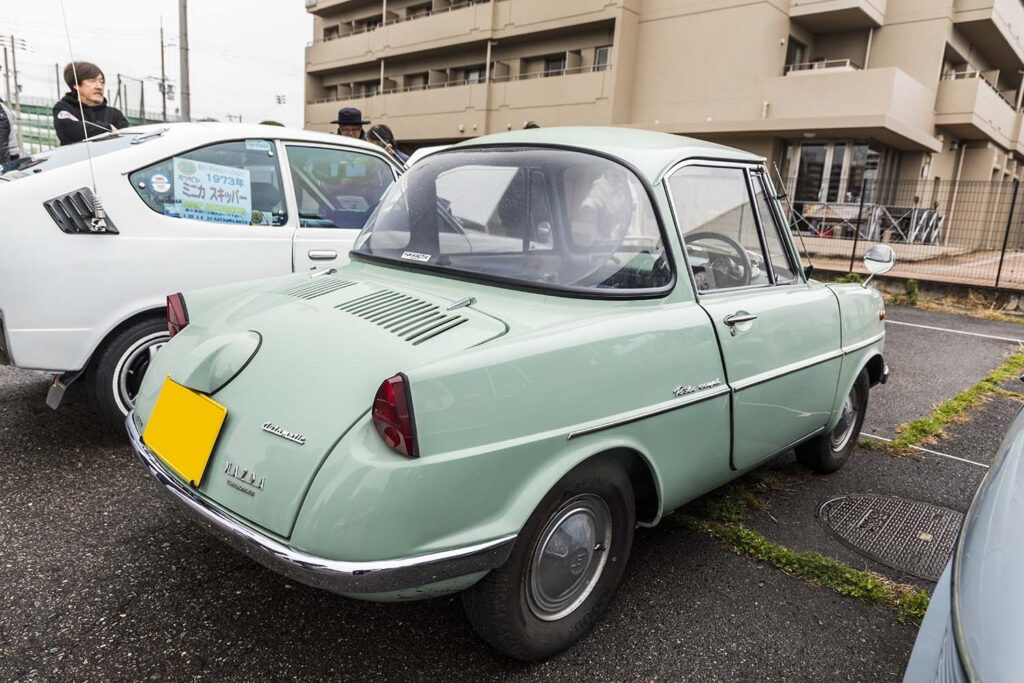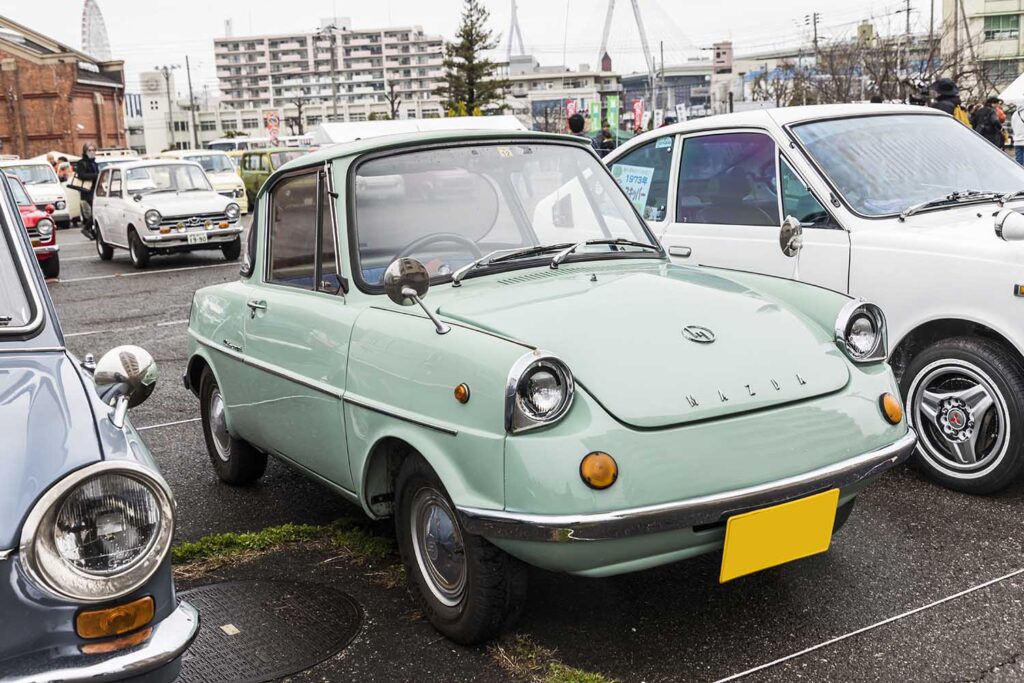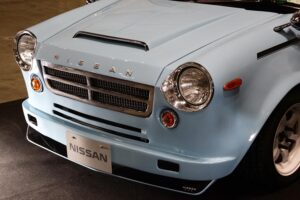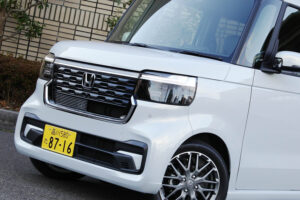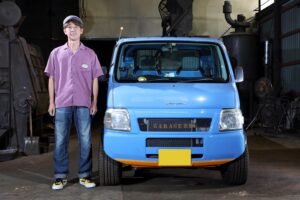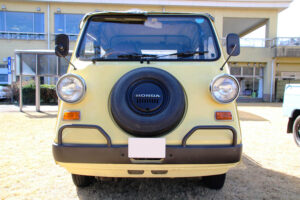The R360 Coupe, Mazda’s first passenger car
The R360 Coupe, as its name suggests, was Mazda’s first four-wheeled passenger car, a 360 cc kei-car launched in 1960.
Spacy design
On 24 March 2024, we spotted a Mazda R360 Coupe, one of the oldest vehicles at the event “360! All Together in OSAKA” held in the Osaka port area. The rounded body style is said to have followed the design motif of the company’s auto tricycles. Still, the body, as well as the large curved windows, are novel even today and contribute greatly to the spacy atmosphere.
The owner, Mr. Namie, owns a 1964 deluxe model with a very rare automatic transmission specification called Torque Drive. The R360 Coupe is the first automatic transmission to be installed in a mini-car. You can see how innovative this vehicle was, including its body shape.
Thorough weight reduction of the body and engine
The body is a monocoque structure, with acrylic side and rear windows and a light alloy bonnet. This resulted in a vehicle weight of 380 kg, the lightest weight of any Japanese car at the time.
The engine was the first 4-stroke, air-cooled, V-twin cylinder, longitudinally-mounted RR layout engine for a minicar. While the engine was based on the one for the K360 autotricycle, it was made lighter by actively employing aluminium and magnesium alloys, while achieving excellent durability and fuel economy. As mentioned above, this vehicle was equipped with a rare torque converter type two-speed automatic transmission. This was a revolutionary system that made driving easier even for the physically handicapped at the time, and even after production of the standard manual version ended in 1966, only the AT version was produced to order until 1969.
Reimported Australian export version
Indeed, the 360cc kei cars assembled at this event are normally fitted with small plate number plates the same size as those of motorbikes, but for some reason this car has a large yellow number plate for modern kei cars. When we asked Mr Namie why, he gave us a surprising answer.
“This car was exported to Australia and was re-imported back into Japan in 2009. That’s why it has a big number. The theory is that only 21 cars were exported to Australia at the time and this is one of them.”
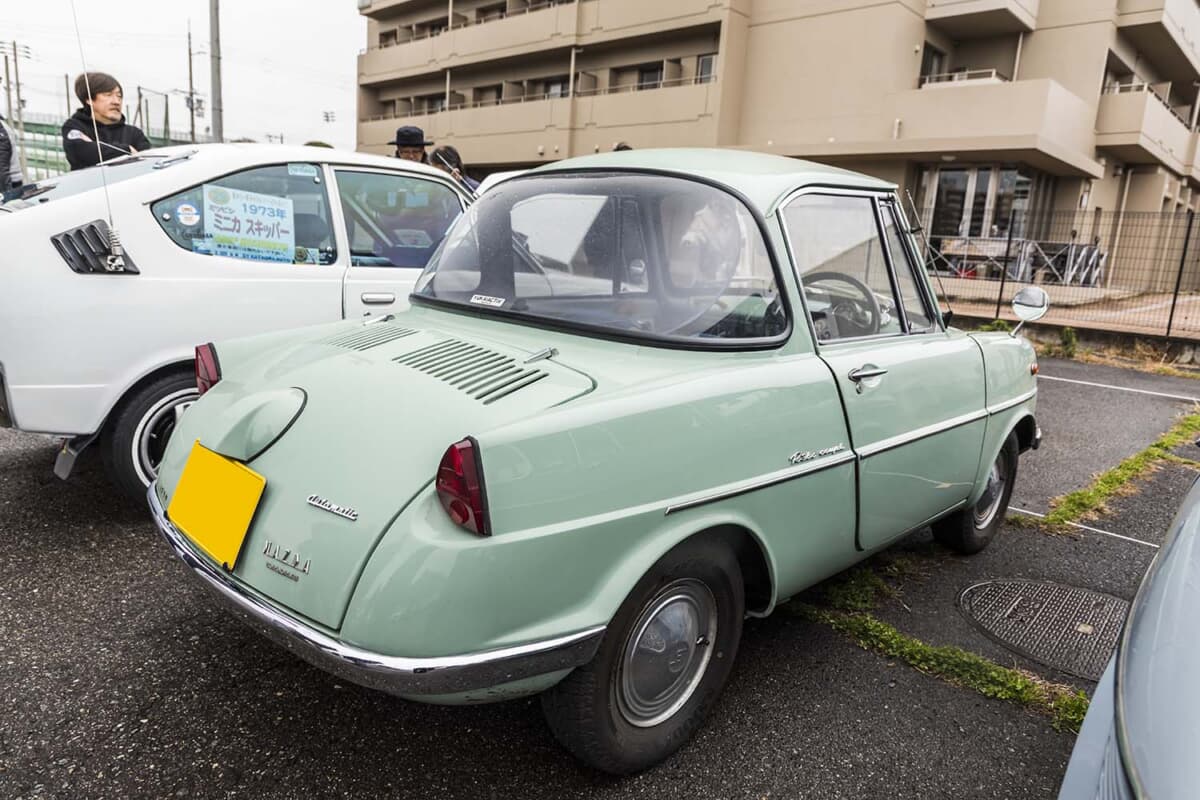
translated by DeepL





